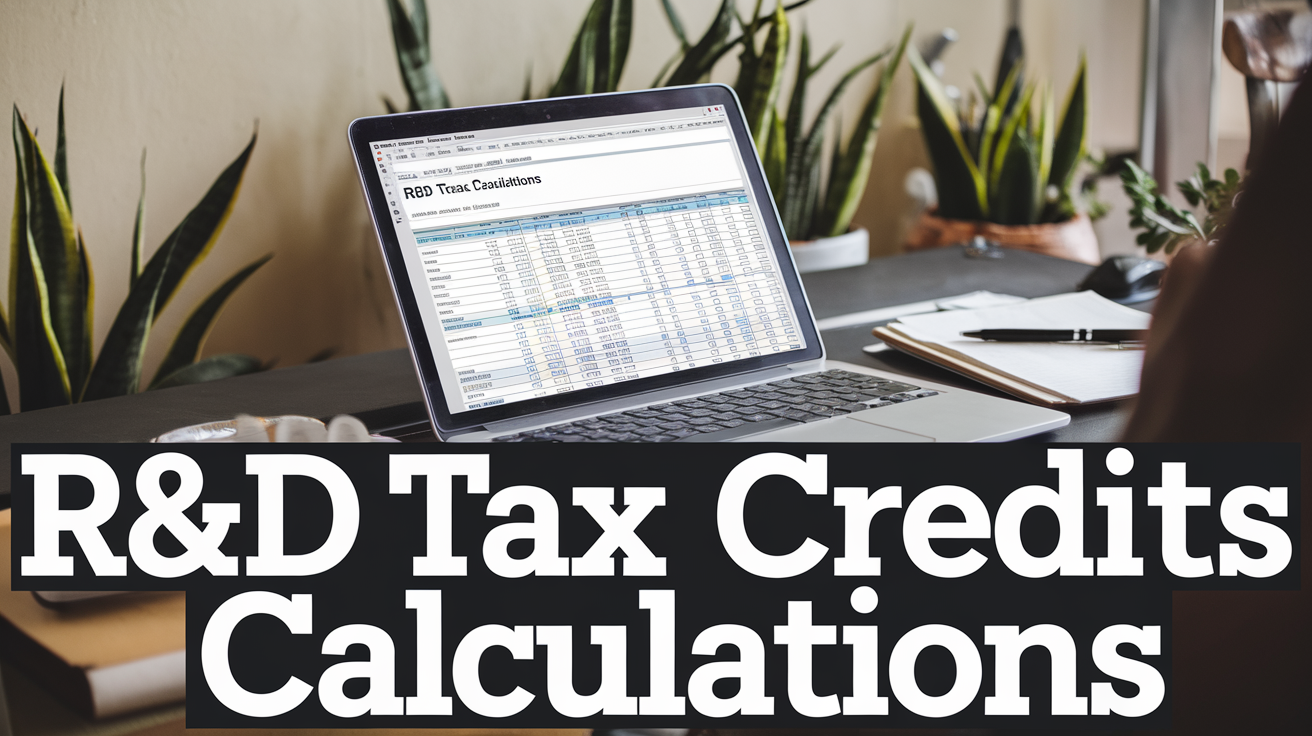R&D Tax Credits Exeter Devon
R&D tax credits in Exeter, Devon, are a valuable corporation tax relief designed to encourage companies to invest in research and development. These credits can significantly reduce a company's tax bill or provide a cash refund, helping to fund innovation and growth. Companies in various sectors, including technology, manufacturing, and life sciences, can benefit from these credits by claiming relief on qualifying R&D expenditure such as staffing costs, consumable items, and software used in R&D projects.
The UK government has introduced a new unified R&D tax credit scheme, effective from accounting periods beginning on or after 1 April 2024, which merges the SME and RDEC schemes into a single scheme with a 20% tax credit rate. This change aims to simplify the system and boost innovation, although it may raise concerns about the overall effectiveness for smaller enterprises. By using R&D tax credits, Exeter businesses can gain a competitive edge in innovation, free up cash flow, and continue to develop new products, processes, or services, driving their growth and competitiveness in the market. R&D Tax Credits UK can provide expert guidance to help businesses navigate this complex process, ensuring they maximize their eligible expenses and comply with all relevant regulations.

How Do R&D Tax Credits Benefit Exeter Businesses?
R&D tax credits can significantly benefit Exeter businesses by reducing their corporation tax liability and providing a cash flow boost, enabling them to invest more in innovation and growth. These credits can be claimed by a wide range of industries, from software development and engineering to food and drink, and even agricultural technology.
Financial Advantages
R&D tax credits offer substantial financial benefits to Exeter businesses. For SMEs, these credits can provide a cash flow benefit of approximately 25-33% of qualifying R&D expenditure, which can be claimed as a cash payment or a reduction in corporation tax.
Companies can claim relief on various expenses, including staffing costs, consumable items, and software used in R&D projects. This relief is available even if the R&D project is not successful, as the focus is on the advancement of science or technology rather than the project's outcome.
Competitive Edge in Innovation
R&D tax credits give Exeter businesses a competitive edge in innovation. By incentivizing investment in research and development, these credits enable companies to develop new products, processes, or services, or enhance existing ones. This can lead to improved performance, scalability, and competitiveness in the market.
For example, companies like Ruroc Ltd, a ski and motorcycle helmet manufacturer, have used R&D tax credits to free up cash flow and continue innovating, allowing them to stay ahead in their industry. This support from the government encourages businesses to invest in new technologies and processes, driving innovation and growth.

Which Industries Commonly Claim R&D Tax Credits?
Various industries in the UK frequently claim R&D tax credits due to their innovative and developmental activities. These credits are particularly beneficial for companies that invest in research and development to overcome scientific or technological uncertainties.
Technology Sector
The technology sector is a significant beneficiary of R&D tax credits. Companies developing new software products, improving existing technologies, or creating innovative digital services often qualify for these credits. For example, a company working on the development of a new AI algorithm or enhancing cybersecurity solutions can claim R&D tax relief.
Manufacturing
Manufacturing companies also commonly claim R&D tax credits. These claims often involve projects aimed at improving production processes, developing new materials, or modifying existing production lines to increase efficiency. For instance, a manufacturing firm that is working on automating its production line or developing more sustainable manufacturing processes can qualify for R&D tax relief.
Life Sciences
The life sciences sector, including pharmaceuticals, biotechnology, and medical devices, heavily relies on R&D activities. Companies in this sector often claim tax credits for projects such as drug development, clinical trials, and the creation of new medical devices. For example, a biotech company researching a new vaccine or a pharmaceutical company developing a new treatment can claim R&D tax relief.
Others
Other industries, such as aerospace, automotive, and energy, also frequently claim R&D tax credits. These industries often engage in complex research and development projects, such as improving fuel efficiency, developing new renewable energy sources, or creating advanced materials. For instance, an aerospace company working on a new aircraft design or an automotive company developing electric vehicle technology can qualify for R&D tax relief.

What Qualifies as R&D Under UK Tax Law?
To qualify for R&D tax relief under UK tax law, your company must be engaged in activities that seek to advance science or technology and resolve technological uncertainties. These activities must be aimed at developing new or improved products, processes, materials, services, or devices.
Qualifying Activities
Qualifying R&D activities involve projects that look to achieve an advance in science and technology, which benefits the field overall, not just your business. Here are the key criteria:
- Advance in Science and Technology: The project must aim to achieve an advance in science and technology that is not just an application of existing knowledge.
- Uncertainty: The project must involve overcoming technological uncertainties that an expert in the field cannot easily resolve.
- Resolution of Uncertainty: The project must attempt to resolve these uncertainties through systematic investigation or experimentation.
- Qualifying Costs: You must have incurred costs on staff, subcontractors, materials, and consumables directly related to the R&D activities.
Excluded Activities
Certain activities are excluded from qualifying for R&D tax relief:
- Arts, Humanities, and Social Sciences: Projects that focus on advances in the arts, humanities, or social sciences (including economics) do not qualify.
- Routine or Periodic Changes: Activities that involve routine or periodic changes, such as minor improvements to existing products or processes, are not eligible.
- Cosmetic or Stylistic Changes: Changes that are purely cosmetic or stylistic do not qualify as R&D.
- Non-Technological Activities: Activities that do not involve technological or scientific innovation, such as market research or quality control, are excluded.

How Are R&D Tax Credits Calculated?
R&D tax credits in the UK are calculated based on the type of scheme your company is eligible for, either the SME R&D tax credit scheme or the Research and Development Expenditure Credit (RDEC) scheme. The calculation involves determining the qualifying R&D expenditure and applying the relevant enhancement rates and tax credit rates.
SME Scheme
For SMEs (Small and Medium Enterprises), the calculation involves enhancing the qualifying R&D expenditure. As of April 1, 2023, the enhancement rate for R&D expenditure is 86% (reduced from 130%).
- For profit-making SMEs, the enhanced expenditure is deducted from taxable profits, and the resulting tax savings are calculated using the corporation tax rate. For example, if you spend £100,000 on R&D, the enhanced expenditure would be £100,000 x 86% = £86,000. This amount is then deducted from your taxable profits, and the tax savings are calculated based on the corporation tax rate of 25%.
- For loss-making SMEs, the enhanced expenditure can be surrendered for a tax credit. The tax credit rate is 10% (reduced from 14.5%) for non-R&D-intensive companies, and 14.5% for R&D-intensive companies (where qualifying expenditure represents 40% or more of total expenditure).
RDEC Scheme
For larger companies or those that do not meet the SME criteria, the RDEC scheme applies. As of April 1, 2023, the RDEC rate has increased to 15% of the qualifying R&D expenditure.
- The RDEC is treated as a standalone credit and can be offset against your tax bill or, if no tax is payable, a cash payment can be claimed. For example, if you spent £200,000 on R&D, you could receive a £30,000 tax reduction or cash payment (15% of £200,000).

What Are the Recent Changes to UK R&D Tax Credits?
The UK government has introduced significant changes to the R&D tax credit schemes to simplify the system, reduce wastage, and boost innovation. These changes include the merger of the SME and RDEC schemes into a single scheme and adjustments to the rates of relief.
Policy Updates
- Rate Changes: For expenditure starting on or after 1 April 2023, the SME R&D scheme's additional deduction decreased from 130% to 86%, and the SME credit rate reduced from 14.5% to 10%. The RDEC rate increased from 13% to 20% for the same period.
- Merged Scheme: From April 1, 2024, the SME and RDEC schemes will be merged into a single R&D tax relief scheme with a 20% tax credit rate. This scheme applies to all companies, except for loss-making R&D intensive SMEs.
- R&D Intensity Threshold: The R&D intensity threshold for SMEs has been reduced from 40% to 30% of total expenditure. Loss-making R&D intensive SMEs will receive a 27% tax credit.
- UK Territoriality: Expenditure on externally provided workers and subcontracting arrangements will be restricted to UK-based activities, with limited exceptions for qualifying overseas expenditure.
- Digital Submission: All R&D claims must be submitted online, and additional information, such as a breakdown of R&D expenditure, must be included. Claims must be supported by a named officer of the company.
- Subcontracting Rules: R&D Tax Credits will be received by the company conducting the research and development, rather than the subcontracted company. Rules regarding subsidised expenditure are being removed.
Impact on Businesses
- Simplified Claims Process: The merger of the schemes is intended to simplify the R&D tax relief process, making it easier for businesses to claim relief. However, the process still requires careful attention to detail and compliance with new rules.
- Financial Impact: The changes in rates and the introduction of the merged scheme will affect the financial benefits businesses receive from R&D tax credits. For example, loss-making SMEs that meet the R&D intensity threshold can claim a 27% tax credit, while other companies will receive a 20% tax credit.
- Increased Scrutiny: HMRC has increased its focus on compliance and scrutiny of R&D claims, which may lead to more detailed reviews and potential challenges to claims. This requires businesses to ensure their claims are thoroughly supported and compliant with the new regulations.

How Can Exeter Businesses Apply for R&D Tax Credits?
To apply for R&D tax credits, Exeter businesses need to follow a specific process and gather the necessary documentation. Here’s a step-by-step guide to help you through this process.
Application Process
- Identify Qualifying R&D: Determine if your business activities qualify as R&D by ensuring they seek an advance in science or technology through the resolution of scientific or technological uncertainties.
- Calculate Qualifying Expenditure: Calculate the costs associated with your R&D projects, including staffing costs, consumable items, and software used in the R&D activities.
- Choose the Correct Scheme: Decide whether your business qualifies for the SME scheme or the Research and Development Expenditure Credit (RDEC) scheme based on your company size and other conditions.
- Prepare Your Claim: Gather all relevant information and documentation to support your R&D claim. This includes details of the R&D projects, costs incurred, and the uncertainties addressed.
- Submit Your Claim: Include your R&D claim in your company’s corporation tax return or submit an amended return if you have already filed. This must be done within two years of the end of the relevant accounting period.
- Contact HMRC: If necessary, engage with HMRC’s specialist R&D units for assistance with your claim. It is recommended to provide an overview of your R&D claim with your CT return or amended return.
Required Documentation
- Detailed Project Records: Keep detailed records of your R&D projects, including the scientific or technological uncertainties addressed and the costs associated with each project.
- Staffing and Consumable Costs: Document staffing costs, including secondary Class 1 NIC and employers’ pension contributions, as well as costs of consumable items used in the R&D activities.
- Software and Overhead Costs: Record the costs of software and any relevant overheads used in the R&D projects.
- Timeline of Activities: Maintain a timeline of activities to clearly define when the R&D project starts and ends, helping to optimize your claims.
- Notification to HMRC: If you are claiming R&D relief for the first time or after a gap of three years, notify HMRC within six months of the end of the accounting period.
By following these steps and ensuring you have the necessary documentation, Exeter businesses can effectively apply for and benefit from R&D tax credits.

What Common Mistakes Should Be Avoided When Claiming?
When filing your self-assessment tax return, it is crucial to avoid common mistakes that can lead to penalties, audits, and unnecessary stress. Here are some key errors to watch out for.
Overclaiming
Overclaiming expenses is a significant mistake that can trigger HMRC scrutiny. This occurs when you claim excessive or inappropriate expenses, such as personal costs as business expenses. To avoid this, familiarize yourself with HMRC guidelines on deductible expenses and keep organized records and receipts for all claimed expenses, ensuring they are directly related to your business activities.
Underclaiming
Underclaiming expenses is another common error that can result in an unnecessarily high tax bill. This happens when you fail to claim all the expenses you are entitled to. Make sure you are aware of the list of allowable expenses and keep clear records of all your business receipts to ensure you claim the correct amount.
Documentation Errors
Documentation errors can lead to significant complications in your tax return. This includes missing or incorrect Unique Taxpayer Reference (UTR) or National Insurance (NI) numbers, and failing to provide necessary supplementary pages. Ensure you include the correct UTR and NI numbers, and check the full list of supplementary pages required for your specific income sources. Also, maintain accurate financial records for at least five years following the submission deadline, as poor record-keeping can result in penalties and challenges during an audit.

How Can Professional Advice Enhance R&D Tax Credits Claims?
Professional advice can significantly boost your R&D tax credits claims by ensuring you meet all the eligibility criteria and maximize your eligible expenses. Expert guidance helps in accurately identifying and documenting qualified research activities, which is crucial for a successful claim.
Role of Tax Credit Specialists
Tax credit specialists at R&D Tax Credits UK play a vital role in several key areas:
- Identifying Eligible Activities: They help determine which of your business activities qualify for the R&D tax credit, ensuring you do not miss out on any eligible expenses.
- Documentation and Record-Keeping: Specialists ensure that all necessary documentation, such as financial records, business records, and technical documents, are properly maintained and presented to support your claim.
- Calculation Methods: They can advise on whether to use the Regular Credit (RC) method or the Alternative Simplified Credit (ASC) method, depending on what is most beneficial for your business.
- Compliance and Audit Support: Experts can guide you through the complex application process and provide support in case of an audit, ensuring compliance with all relevant regulations.
Benefits of Expert Guidance
Expert guidance from R&D Tax Credits UK offers several benefits:
- Maximized Claims: Specialists can help you identify all eligible expenses, ensuring you claim the maximum amount possible.
- Reduced Risk of Errors: With expert advice, you can avoid common mistakes that might lead to your claim being rejected or delayed.
- Efficient Process: Professionals handle the complex paperwork and calculations, saving you time and allowing you to focus on your business.
- Compliance Assurance: They ensure that your claims are fully compliant with HMRC regulations, reducing the risk of audits and disputes.
By leveraging the expertise of R&D Tax Credits UK, you can navigate the R&D tax credit process with confidence and optimize your tax savings.
In Conclusion
R&D tax credits in Exeter, Devon, offer a valuable incentive for businesses to invest in innovation and technological advancement. These credits, designed to reduce a company's tax bill or provide a cash refund, are available to a wide range of industries, including technology, manufacturing, life sciences, and more.
Simplified and Enhanced Benefits
As of April 1, 2024, the UK government has merged the SME and RDEC schemes into a single R&D tax relief scheme, aiming to simplify the process and reduce wastage. The R&D intensity threshold for SMEs has been reduced from 40% to 30%, making more businesses eligible for enhanced rates. This change, along with the restriction of overseas expenditure to UK-based activities, ensures that the relief is more targeted and effective.
Importance of Professional Guidance
To maximize the benefits of R&D tax credits, it is crucial to seek professional advice. Specialists at R&D Tax Credits UK can help identify eligible activities, ensure accurate documentation and record-keeping, and guide you through the complex application process. This expertise not only maximizes your claims but also reduces the risk of errors and ensures compliance with HMRC regulations.
Take Action Today
If you believe your business is undertaking qualifying R&D activities, do not miss out on the opportunity to claim these valuable tax credits. Contact R&D Tax Credits UK today to discuss your eligibility and ensure you are taking full advantage of the financial benefits available to you. With the right guidance, you can navigate the R&D tax credit process confidently and optimize your tax savings, allowing your business to continue innovating and growing.

